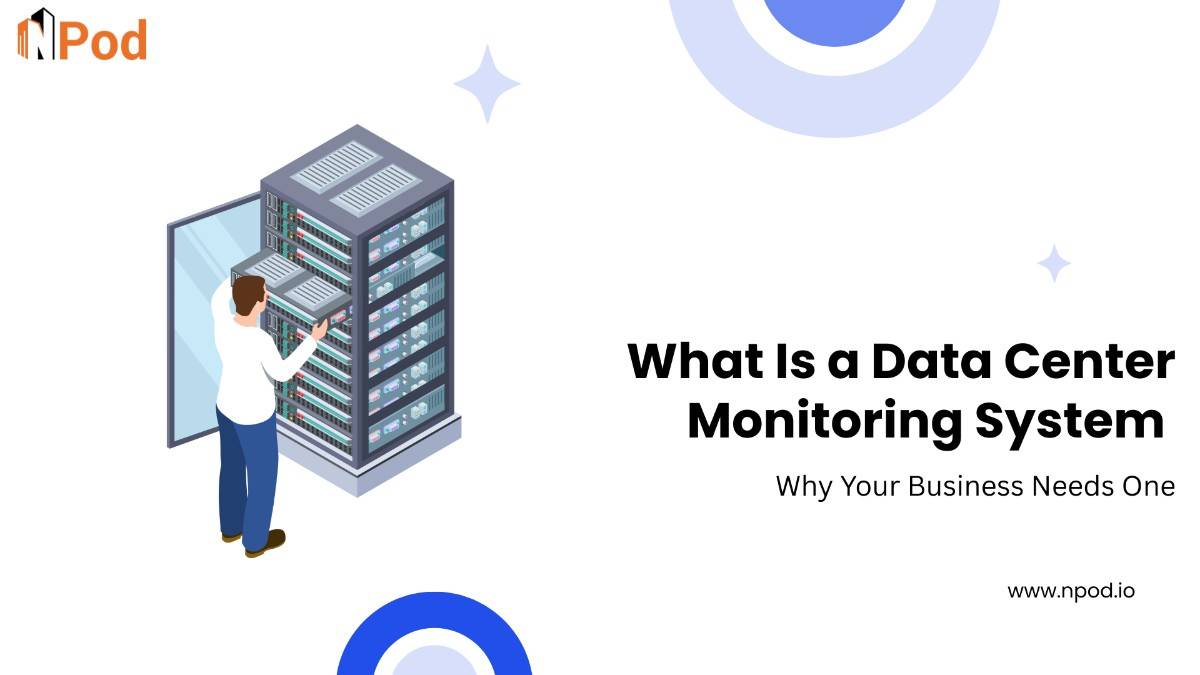


These days, having a data center monitoring system is essential rather than optional.
Operating your company in a building where nobody checks the temperature, nobody keeps an eye on the power meters, and nobody notices when a door is left open. Sounds dangerous, doesn’t it? Imagine now that this structure serves as your data center, the central nervous system of your business. You need a way to keep an eye on everything, including the device’s health, temperature, cooling, power supply, physical access, and more. A data center monitoring system can help with that.
By serving as your digital watchdog 24/7, this intelligent solution makes sure your IT infrastructure is safe, sound, and operating at peak efficiency. Let’s examine how it operates and the reasons your company, no matter how big or small, should be concerned.
What Is a Data Center Monitoring System?
A centralized platform that continuously monitors every important component of a data center’s infrastructure is called a data center monitoring system. It makes sure that everything functions properly, from hardware performance to environmental factors, and notifies teams when something goes wrong.
Essential Components It tracks battery and UPS performance and keeps an eye on power usage and backup systems to guarantee a steady supply.
Temperature and Humidity: Prevents overheating and maintains a steady atmosphere.
Server Health: Monitors memory performance, disc utilization, and CPU load.
Access Control: Keeps track of who enters and leaves the actual area.
Network Traffic: Identifies anomalous activity or spikes in traffic.
Cooling Systems: Examines HVAC units for malfunctions or inefficiency.
In simple terms, it’s like placing intelligent sensors and eyes across your data center, actively reporting while discreetly observing.
Why Is Infrastructure Monitoring Important?
For the digital backbone of your company, infrastructure monitoring is similar to having a heart rate monitor. It assists in identifying, evaluating, and fixing problems before they result in outages.
Strong infrastructure monitoring has the following advantages:
Proactive Issue Detection: Find small problems before they become major ones that cause downtime.
Visibility & Control: A central dashboard that provides total transparency into the operations of the data center.
Financial Savings: Avoid costly downtime and maximize energy use.
Enhanced Efficiency: Recognize and improve underperforming systems.
Security & Compliance: Maintain regulatory standards and keep track of access events.
Features of a Data Center Monitoring System
Power Monitoring
Monitor energy usage, spot surges, and get notifications when there are outages. This prevents overloading and ensures that backup devices, such as generators or UPSs, are operating perfectly.
Monitoring of the Environment
The temperature
The level of humidity
Movement of Air
Leaks of water
By doing this, you can protect your gear from environmental hazards and overheating.
Hardware and Device Health Monitoring Monitors
CPU and memory utilization
Failures of the disc
Hardware lifecycle
Administrators can act quickly if a device begins to behave strangely.
Monitor for Access Control Monitoring
Sensors for doors
Biometric access or a badge
Unauthorized attempts to enter
This detects questionable physical access attempts, preventing data breaches.
Network Monitoring
Use of bandwidth
The delayImagine
Loss of packets
Attacks or hacking from outside
This ensures that your network will continue to operate at its best.
Benefits of Remote Data Center Monitoring
In the age of work from anywhere, remote data center monitoring is revolutionary.
The main benefits of Remote Monitoring:
24/7 Availability: Receive notifications at any moment, even when no one is present.
Centralized Management: Manage multiple data centers from one dashboard.
Lower Manpower Costs: Physical system management requires fewer on-site employees.
Improved Business Continuity: Quickly and remotely address problems.
Rapid Incident Response: Reduce downtime by fixing issues more quickly.
NPOD Monitoring: Your Smart Monitoring Partner
At NPOD, we recognize that monitoring is about more than just collecting data; it’s about turning that data into something useful. Our NPOD Monitoring System is designed with cutting-edge features to enable your IT staff.
Why Is NPOD Monitoring Different?
The dashboards in real time with complete visibility
AI-powered warning system for preventive problem identification
The ability to scale across core, micro, and edge data centers
Smooth interaction with access control, cooling, and power systems
Integrated audit-ready logging and compliance features
Conclusion
These days, having a data center monitoring system is essential rather than optional. Infrastructure monitoring lets you stay proactive, lower risks, and manage your organization efficiently as your reliance on digital platforms grows.
Additionally, you can feel secure knowing that your data center is continuously monitored, optimized, and safeguarded from a single intelligent, centralized system with solutions like NPOD Monitoring.
